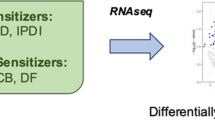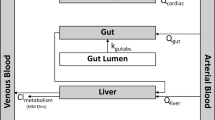Abstract
Respiratory sensitization has been considered an important toxicological endpoint, because of the severe risk to human health. A great part of sensitization events were caused by low molecular weight (< 1000) respiratory sensitizers in the past decades. However, there is currently no widely accepted test method that can identify prospective low molecular weight respiratory sensitisers. Herein, we performed the study of modeling and insights into molecular basis of low molecular weight respiratory sensitizers with a high-quality data set containing 136 respiratory sensitizers and 518 nonsensitizers. We built a number of classification models by using OCHEM tools, and a consensus model was developed based on the ten best individual models. The consensus model showed good predictive ability with a balanced accuracy of 0.78 and 0.85 on fivefold cross-validation and external validation, respectively. The readers can predict the respiratory sensitization of organic compounds via https://ochem.eu/article/114857. The effect of several molecular properties on respiratory sensitization was also evaluated. The results indicated that these properties differ significantly between respiratory sensitizers and nonsensitizers. Furthermore, 14 privileged substructures responsible for respiratory sensitization were identified. We hope the models and the findings could provide useful help for environmental risk assessment.
Graphic abstract







Similar content being viewed by others
References
Tarlo SM, Lemiere C (2014) Occupational asthma. N Engl J Med 370(7):640–649. https://doi.org/10.1056/NEJMra1301758
Enoch SJ, Seed MJ, Roberts DW, Cronin MT, Stocks SJ, Agius RM (2012) Development of mechanism-based structural alerts for respiratory sensitization hazard identification. Chem Res Toxicol 25(11):2490–2498. https://doi.org/10.1021/tx3003092
Dik S, Ezendam J, Cunningham AR, Carrasquer CA, van Loveren H, Rorije E (2014) Evaluation of in silico models for the identification of respiratory sensitizers. Toxicol Sci 142(2):385–394. https://doi.org/10.1093/toxsci/kfu188
Dik S, Pennings JL, van Loveren H, Ezendam J (2015) Development of an in vitro test to identify respiratory sensitizers in bronchial epithelial cells using gene expression profiling. Toxicol In Vitro 30(1):274–280. https://doi.org/10.1016/j.tiv.2015.10.010
Arts JH, Kuper CF (2007) Animal models to test respiratory allergy of low molecular weight chemicals: a guidance. Methods 41(1):61–71. https://doi.org/10.1016/j.ymeth.2006.07.005
Boverhof DR, Billington R, Gollapudi BB, Hotchkiss JA, Krieger SM, Poole A, Wiescinski CM, Woolhiser MR (2008) Respiratory sensitization and allergy: current research approaches and needs. Toxicol Appl Pharmacol 226(1):1–13. https://doi.org/10.1016/j.taap.2007.10.008
Lalko JF, Kimber I, Gerberick GF, Foertsch LM, Api AM, Dearman RJ (2012) The direct peptide reactivity assay: selectivity of chemical respiratory allergens. Toxicol Sci 129(2):421–431. https://doi.org/10.1093/toxsci/kfs205
Banerjee P, Eckert AO, Schrey AK, Preissner R (2018) ProTox-II: a webserver for the prediction of toxicity of chemicals. Nucl Acids Res 46(W1):W257–W263. https://doi.org/10.1093/nar/gky318
Yang H, Lou C, Sun L, Li J, Cai Y, Wang Z, Li W, Liu G, Tang Y (2018) admetSAR 2.0: web-service for prediction and optimization of chemical ADMET properties. Bioinformatics 35(6):1067–1069. https://doi.org/10.1093/bioinformatics/bty707
Tetko IV, Novotarskyi S, Sushko I, Ivanov V, Mathieu B (2013) Development of dimethyl sulfoxide solubility models using 163 000 molecules: using a domain applicability metric to select more reliable predictions. J Chem Inf Model 53(8):1990–2000
Ghosh S, Ojha PK, Carnesecchi E, Lombardo A, Roy K, Benfenati E (2020) Exploring QSAR modeling of toxicity of chemicals on earthworm. Ecotoxicol Environ Saf 190:110067. https://doi.org/10.1016/j.ecoenv.2019.110067
Cunningham AR, Cunningham SL, Consoer DM, Moss ST, Karol MH (2005) Development of an information-intensive structure-activity relationship model and its application to human respiratory chemical sensitizers. SAR QSAR Environ Res 16(3):273–285. https://doi.org/10.1080/10659360500036976
Graham C, Rosenkranz HS, Karol MH (1997) Structure-activity model of chemicals that cause human respiratory sensitization. Regul Toxicol Pharmacol 26(3):296–306. https://doi.org/10.1006/rtph.1997.1170
Jarvis J, Seed MJ, Elton R, Sawyer L, Agius R (2005) Relationship between chemical structure and the occupational asthma hazard of low molecular weight organic compounds. Occup Environ Med 62(4):243–250. https://doi.org/10.1136/oem.2004.016402
Jarvis J, Seed MJ, Stocks SJ, Agius RM (2015) A refined QSAR model for prediction of chemical asthma hazard. Occup Med 65(8):659–666. https://doi.org/10.1093/occmed/kqv105
Karol MH, Graham C, Gealy R, Macina OT, Sussman N, Rosenkranz HS (1996) Structure-activity relationships and computer-assisted analysis of respiratory sensitization potential. Toxicol Lett 86(2–3):187–191
Karol MH, Macina OT, Cunningham A (2001) Cell and molecular biology of chemical allergy. Ann Allergy Asthma Immunol 87(6 Suppl 3):28–32
Lei T, Chen F, Liu H, Sun H, Kang Y, Li D, Li Y, Hou T (2017) ADMET evaluation in drug discovery. Part 17: development of quantitative and qualitative prediction models for chemical-induced respiratory toxicity. Mol Pharm 14(7):2407–2421. https://doi.org/10.1021/acs.molpharmaceut.7b00317
Mekenyan O, Patlewicz G, Kuseva C, Popova I, Mehmed A, Kotov S, Zhechev T, Pavlov T, Temelkov S, Roberts DW (2014) A mechanistic approach to modeling respiratory sensitization. Chem Res Toxicol 27(2):219–239. https://doi.org/10.1021/tx400345b
Seed M, Agius R (2010) Further validation of computer-based prediction of chemical asthma hazard. Occup Med (Lond) 60(2):115–120. https://doi.org/10.1093/occmed/kqp168
Seed MJ, Agius RM (2017) Progress with structure-activity relationship modelling of occupational chemical respiratory sensitizers. Curr Opin Allergy Clin Immunol 17(2):64–71. https://doi.org/10.1097/aci.0000000000000355
Klopman G (2002) MULTICASE 1. A hierarchical computer automated structure evaluation program. Quant Struct Act Relat 11(2):176–184. https://doi.org/10.1002/qsar.19920110208
Bhhatarai B, Wilson DM, Parks AK, Carney EW, Spencer PJ (2016) Evaluation of TOPKAT, toxtree, and Derek nexus in silico models for ocular irritation and development of a knowledge-based framework to improve the prediction of severe irritation. Chem Res Toxicol 29(5):810–822. https://doi.org/10.1021/acs.chemrestox.5b00531
Sushko I, Novotarskyi S, Korner R, Pandey AK, Rupp M, Teetz W, Brandmaier S, Abdelaziz A, Prokopenko VV, Tanchuk VY, Todeschini R, Varnek A, Marcou G, Ertl P, Potemkin V, Grishina M, Gasteiger J, Schwab C, Baskin II, Palyulin VA, Radchenko EV, Welsh WJ, Kholodovych V, Chekmarev D, Cherkasov A, Aires-de-Sousa J, Zhang QY, Bender A, Nigsch F, Patiny L, Williams A, Tkachenko V, Tetko IV (2011) Online chemical modeling environment (OCHEM): web platform for data storage, model development and publishing of chemical information. J Comput Aided Mol Des 25(6):533–554. https://doi.org/10.1007/s10822-011-9440-2
Xin Y (1999) Evolving artificial neural networks. Proc IEEE 87(9):1423–1447. https://doi.org/10.1109/5.784219
Tetko IV (2002) Neural network studies. 4. Introduction to associative neural networks. J Chem Inf Comput Sci 42(3):717–728
Varma A, Sahoo S (1998) A behavioral economics study on the management accountant’s professional networking practices through mobile technologies. Theor Econ Lett 8(4):295–336
Chang CC, Lin CJ (2011) LIBSVM: a library for support vector machines. ACM Trans Intell Syst Technol 2:27:21–27:27. https://doi.org/10.1145/1961189.1961199
Noble WS (2006) What is a support vector machine? Nat Biotechnol 24(12):1565–1567. https://doi.org/10.1038/nbt1206-1565
Denœux T (2008) A k-nearest neighbor classification rule based on Dempster-Shafer theory. In: Yager RR, Liu L (eds) Classic works of the Dempster-Shafer theory of belief functions. Springer, Berlin, pp 737–760. https://doi.org/10.1007/978-3-540-44792-4_29
Montgomery DC, Peck EA (1982) Introduction to linear regression analysis. Wiley, New York. https://doi.org/10.2307/2348054
Vorberg S, Tetko IV (2014) Modeling the biodegradability of chemical compounds using the online CHEmical Modeling Environment (OCHEM). Mol Inform 33(1):73–85. https://doi.org/10.1002/minf.201300030
Awad M, Khanna R (eds) (2015) Deep neural networks. In: Efficient learning machines: theories, concepts, and applications for engineers and system designers. Apress, Berkeley, pp 127–147. https://doi.org/10.1007/978-1-4302-5990-9_7
Qin W, Xiao L, Yang H, Cai Y, Liu G (2017) In silico prediction of serious eye irritation or corrosion potential of chemicals. RSC Adv 7(11):6697–6703
Li X, Chen Y, Song X, Zhang Y, Li H, Zhao Y (2018) The development and application of in silico models for drug induced liver injury. RSC Adv 8(15):8101–8111
Ai H, Wu X, Zhang L, Qi M, Zhao Y, Zhao Q, Zhao J, Liu H (2019) QSAR modelling study of the bioconcentration factor and toxicity of organic compounds to aquatic organisms using machine learning and ensemble methods. Ecotoxicol Environ Saf 179:71–78. https://doi.org/10.1016/j.ecoenv.2019.04.035
Cui X, Liu J, Zhang J, Wu Q, Li X (2019) In silico prediction of drug-induced rhabdomyolysis with machine-learning models and structural alerts. J Appl Toxicol 39(8):1224–1232. https://doi.org/10.1002/jat.3808
Jiang C, Yang H, Di P, Li W, Liu G (2019) In silico prediction of chemical reproductive toxicity using machine learning. J Appl Toxicol 39:844–854
Liu L, Yang H, Cai Y, Cao Q, Tang Y (2019) In silico prediction of chemical aquatic toxicity for marine crustaceans via machine learning. Toxicol Res 8:341–352
García-Jacas CR, Contreras-Torres E, Marrero-Ponce Y, Pupo-Meriño M, Barigye SJ, Cabrera-Leyva L (2016) Examining the predictive accuracy of the novel 3D N-linear algebraic molecular codifications on benchmark datasets. J Cheminform 8(1):10. https://doi.org/10.1186/s13321-016-0122-x
Mauri A, Consonni V, Todeschini R (2017) Molecular descriptors. In: Leszczynski J, Kaczmarek-Kedziera A, Puzyn TG, Papadopoulos M, Reis HK, Shukla M (eds) Handbook of computational chemistry. Springer, Cham, pp 2065–2093. https://doi.org/10.1007/978-3-319-27282-5_51
García-Jacas CR, Cabrera-Leyva L, Marrero-Ponce Y, Suárez-Lezcano J, Cortés-Guzmán F, Pupo-Meriño M, Vivas-Reyes R (2018) Choquet integral-based fuzzy molecular characterizations: when global definitions are computed from the dependency among atom/bond contributions (LOVIs/LOEIs). J Cheminform 10(1):51. https://doi.org/10.1186/s13321-018-0306-7
Tetko M IV, Lowe D, Williams AJ (2016) The development of models to predict melting and pyrolysis point data associated with several hundred thousand compounds mined from PATENTS. J Cheminform 8(1):2. https://doi.org/10.1186/s13321-016-0113-y
Cheng F, Li W, Liu G, Tang Y (2013) In silico ADMET prediction: recent advances, current challenges and future trends. Curr Top Med Chem 13(11):1273–1289
Li X, Zhang Y, Chen H, Li H, Zhao Y (2017) Insights into the molecular basis of the acute contact toxicity of diverse organic chemicals in the honey bee. J Chem Inf Model 57(12):2948–2957. https://doi.org/10.1021/acs.jcim.7b00476
He L, Xiao K, Zhou C, Li G, Yang H, Li Z, Cheng J (2019) Insights into pesticide toxicity against aquatic organism: QSTR models on Daphnia Magna. Ecotoxicol Environ Saf 173:285–292. https://doi.org/10.1016/j.ecoenv.2019.02.014
Yap CW (2011) PaDEL-descriptor: an open source software to calculate molecular descriptors and fingerprints. J Comput Chem 32(7):1466–1474. https://doi.org/10.1002/jcc.21707
Yang H, Li J, Wu Z, Li W, Liu G, Tang Y (2017) Evaluation of different methods for identification of structural alerts using chemical ames mutagenicity data set as a benchmark. Chem Res Toxicol 30(6):1355–1364. https://doi.org/10.1021/acs.chemrestox.7b00083
Yang H, Sun L, Li W, Liu G, Tang Y (2018) In silico prediction of chemical toxicity for drug design using machine learning methods and structural alerts. Front Chem 6:article 30. https://doi.org/10.3389/fchem.2018.00030
Chen Y, Cheng F, Sun L, Li W, Liu G, Tang Y (2014) Computational models to predict endocrine-disrupting chemical binding with androgen or oestrogen receptors. Ecotoxicol Environ Saf 110:280–287. https://doi.org/10.1016/j.ecoenv.2014.08.026
Bajusz D, Rácz A, Héberger K (2015) Why is Tanimoto index an appropriate choice for fingerprint-based similarity calculations? J Cheminform 7(1):20. https://doi.org/10.1186/s13321-015-0069-3
Li X, Zhang Y, Li H, Zhao Y (2017) Modeling of the hERG K+ channel blockage using online chemical database and modeling environment (OCHEM). Mol Inform 36(12):1700074. https://doi.org/10.1002/minf.201700074
Cheng F, Yu Y, Zhou Y, Shen Z, Xiao W, Liu G, Li W, Lee PW, Tang Y (2011) Insights into molecular basis of cytochrome p450 inhibitory promiscuity of compounds. J Chem Inf Model 51(10):2482–2495. https://doi.org/10.1021/ci200317s
Sanderson JP, Naisbitt DJ, Farrell J, Ashby CA, Tucker MJ, Rieder MJ, Pirmohamed M, Clarke SE, Park BK (2007) Sulfamethoxazole and its metabolite nitroso sulfamethoxazole stimulate dendritic cell costimulatory signaling. J Immunol 178(9):5533–5542. https://doi.org/10.4049/jimmunol.178.9.5533
Aricò F, Chiurato M, Peltier J, Tundo P (2012) Sulfur and nitrogen mustard carbonate analogues. Eur J Org Chem 17:3223–3228
Ahn DU, Kim IS, Lee EJ (2013) Irradiation and additive combinations on the pathogen reduction and quality of poultry meat. Poult Sci 92(2):534–545. https://doi.org/10.3382/ps.2012-02722
Acknowledgements
This work was supported by the National Natural Science Foundation of China (Grant 81803433). The authors gratefully acknowledge the helpful comments with the citations and criteria for models from an anonymous reviewer. The authors also wish to thank Dr. Igor V. Tetko for the models and data availability.
Author information
Authors and Affiliations
Corresponding author
Ethics declarations
Conflict of interest
The authors declare that they have no conflict of interest.
Additional information
Publisher's Note
Springer Nature remains neutral with regard to jurisdictional claims in published maps and institutional affiliations.
Electronic supplementary material
Below is the link to the electronic supplementary material.
Rights and permissions
About this article
Cite this article
Cui, X., Yang, R., Li, S. et al. Modeling and insights into molecular basis of low molecular weight respiratory sensitizers. Mol Divers 25, 847–859 (2021). https://doi.org/10.1007/s11030-020-10069-3
Received:
Accepted:
Published:
Issue Date:
DOI: https://doi.org/10.1007/s11030-020-10069-3




